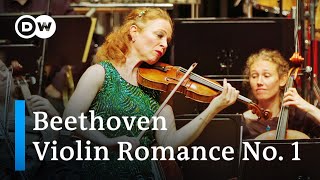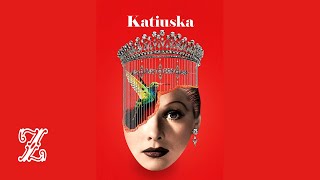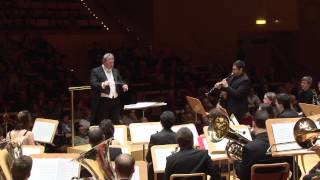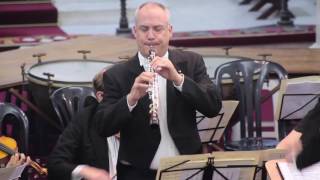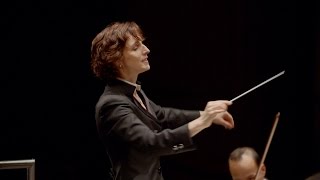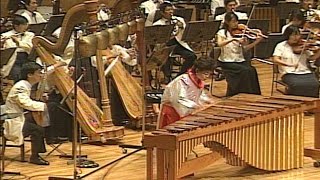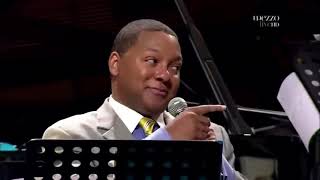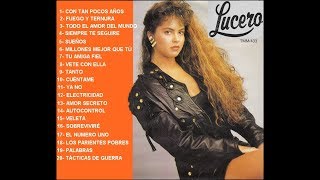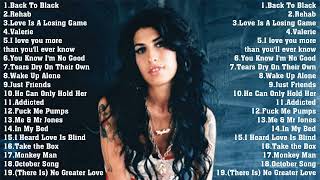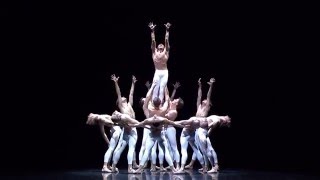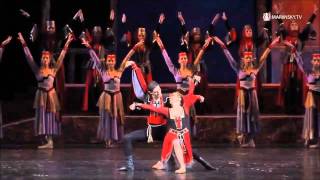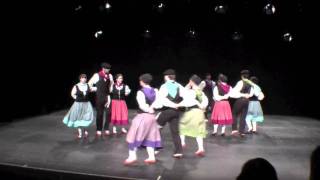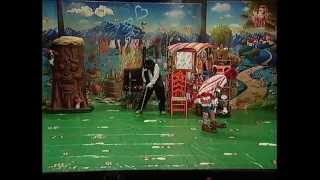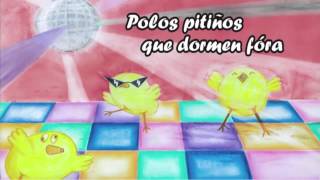Recommended music videos for initiation to classical music
Ludwig van Beethoven (1770-1827) together with Bach and Mozart is part of the trio of giants of Western music. Born in Bonn , his father of Flemish origin, tried to make him a second Mozart , although it was a notable failure. Despite this, from the age of nine the organist Christian Gottlob Neefe captivated him with the study of Bach . In 1787 he moved to Vienna with the intention of taking Mozart classes, but the death of his mother returned him to Bonn a few days later. And so after five years, he returned to Vienna where he contacted Haydn and Salieri , becoming known as a composer and pianist with notable public recognition. However, his profession as a pianist could not be carried out due to deafness that attacked him the following year, leaving him completely incapable of this faculty.
The Romance for Violin and Orchestra No. 1 in G major, Op. 40 was composed by Ludwig van Beethoven in 1802 and was published the following year. Beethoven 's great prestige as a pianist often makes us forget that he was also a talented violinist. He had great knowledge and affection for this instrument, as demonstrated by his abundant violin production. Of his romances , this is the second in time to be composed but the first to go to print. For this reason, the Romance in G major is assigned the number 1 even though its composition was later in time. The piece consists of a single movement, Adagio cantabile , in G major and presents a rondo structure with two contrasting episodes, following the scheme A B A C A and coda.
Today's performance is by the German violinist Carolin Widmann accompanied by the Basel Chamber Orchestra (Kammerorchester Basel) conducted by maestro Sirvan Cambreling .
Pablo Sorozábal (1897-1988) was born in Donostia/San Sebastián , according to his own memoirs “into a proletarian and Basque-speaking family.” He began his violin studies at the San Sebastián Municipal Music Academy ; At the age of 17 he joined the San Sebastián Casino Orchestra and at the age of 21, the Madrid Philharmonic . With a scholarship from the Provincial Council of Gipuzkoa, he complements his studies in Leipzig and Berlin . Due to his republican ideas, after the Civil War , he was isolated as a composer, which made it difficult for him to premiere the different zarzuelas he composed in Madrid . As director of the Madrid Symphony Orchestra he ended up in bad shape in 1952 when he was prohibited from playing Shostakovich 's Leningrad Symphony , a fact that led to his resignation.
Katiuska is an operetta in two acts, in prose and verse, with music by Pablo Sorozábal and a libretto by Emilio González del Castillo (1882–1940) and Manuel Martí Alonso (d. 1962). It premiered on January 28, 1931 at the Victoria Theater in Barcelona and is the first work for stage that Sorozabal composed. It features elegant orchestration, good concert singers, intense and varied romances, as well as a collection of dances and comic or exotic numbers typical of the operetta genre. The work presents a simple love story that has as its background an episode in the History of Russia .
Óscar Trujillo (Óscar Fernando Trujillo Gómez) is a trumpeter and composer, with a degree in Music from the University of Caldas . He began his studies in the Caldas Departmental Bands Program. He has received training in Venezuela, Mexico, Puerto Rico and Brazil . He was a Mazda Foundation Scholar for Art and Science. His arrangements and compositions have been performed by groups such as the National Symphony Orchestra of Cuba, the Zaragoza Wind Ensamble, the Dominican Philharmonic Orchestra, the Salvador Youth Symphony Orchestra and the Caldas Symphony Orchestra . He is currently a trumpet professor at the University of Caldas , Principal Trumpeter of the Caldas Symphony Orchestra , Director and Founder of the Redemptorist Conservatory , and is pursuing a Master's degree in Music with an emphasis on trumpet at EAFIT University . (Extracted from Accompás article)
Bambuco is a traditional musical genre from Colombia and Venezuela , specifically from the Colombian and Venezuelan Andes region. It is considered one of the most representative genres of Colombian music and is part of the country's folklore. It is characterized by its binary rhythm and its soft and sentimental melody, although it has evolved over time, adapting to different regions and musical styles. It has been recognized as a symbol of Colombian cultural identity and is considered an important element in festivals and folkloric events in the country.
Today we attended the excellent performance of the Wind Orchestra Zaragoza with maestro Frank de Vuyst at the helm.
Ana Vidović (1980) is a Croatian guitarist who began playing guitar at the age of five, inspired by her brother Viktor . At only thirteen years old she would become the youngest student to attend the prestigious National Musical Academy in Zagreb , where she was taught by Professor Istvan Romer . Vidović 's high reputation in Europe led to him receiving an invitation to study at the Peabody Conservatory in Baltimore , Maryland, United States, where he studied with Manuel Barrueco and graduated in May 2003.
It has won a large number of awards and competitions around the world. These include first prizes in the Albert Agustín International Competition , in Bath , England; the Fernando Sor competition in Rome , Italy; and the Francisco Tárrega competition in Benicasim , Spain. Other first prizes include the Eurovision Song Contest for Young Artists; the Mauro Giuliani award in Italy, the Guitar Spring in Belgium and the International Young Artists Audition in New York. His international career includes performing recitals in London, Paris, Vienna, Salzburg, Barcelona, Rome, Budapest, China, Warsaw, Tel Aviv, Oslo, Copenhagen, Toronto, Baltimore, San Francisco, Knoxville, Houston, Austin, Dallas, St Louis, Jakarta, Caracas, Asunción and Mexico .
GUITAR ARTISTRY IN CONCERT: Federico Moreno Torroba CASTELLIAN SUITE: I Fandanguillo (0´04´´), II Arada (1´49´´), III Danza (5´54´´) .-. Pierre Bensusan HIGHLANDS [07:46] .-. Astor Piazzolla FOUR PIECES: I Verano Porteno (12'56''), II Milonga del Angel (17:15), III The Death of the Angel [22:47], IV Primavera Portena [26:49] .-. Sergio Assad FAREWELL [32:29] .-. Stanley Myers CAVATINA [35:41] .-. Heitor Villa-Lobos ETUDE NO. 1 [39:04] .-. ETUDE NO. 8 [41:13] .-. ETUDE NO 7 [43:50] .-. Agustin Barrios Mangore - THE CATHEDRAL: I Preludio saudade [47:51], II Andante religious [50:03], III Allegro solemne [51:55]
Recommended classical music videos
Tomaso Albinoni (1671-1751) was an Italian Baroque composer, who was born and died in Venice ; known in his time for his operas, when today his popularity comes from instrumental music and, above all, from his famous Adagio , which was not written by him, but was composed in 1945 by the Italian musicologist Remo Giazotto based on some fragments of a sonata for strings and organ by Albinoni . In contrast to the composers of his time, he never sought a position in the Church or the Court , since he defended himself with his own resources and was tremendously jealous of his own independence. Son of a wealthy family, he studied singing and violin and composed some 50 operas and abundant instrumental music; above all, sonatas for solo and trio and concertos for oboe and violin.
The Concerto is a musical form written for one or more solo instruments accompanied by an instrumental ensemble. It was Vivaldi who established the fundamental bases of its structure with three movements (I Fast-II Slow-III Fast) and presented as a dialogue between the soloist(s) and the instrumental ensemble.
Today we offer the Oboe Concerto Op. 9 no. 2 in D minor by Albinoni structured in three movements I (0´27´´) ALLEGRO NON PRESTO .-. II (4´47´´) ADAGIO .-. III (9´17´´) ALLEGRO. The oboe interpretation is provided by Aldo Salvetti .
Franz Joseph Haydn (1732-1809), Austrian composer whose brother Michael Haydn was also a notable composer, was one of the main pillars on which classicism (1750-1810) was based. At six years of age he began his studies of harpsichord and violin. At the age of eight he was admitted as a choralist at St. Stephen's Cathedral in Vienna where he continued his musical studies. After changing his voice, he had to survive by working multiple jobs, while studying composition analyzing the works of Carl Philipp Emanuel Bach . He maintained a close friendship with Mozart and was Beethoven 's teacher. He laid the main foundations of the sonata form and the formal structure of the string quartet and the symphony. He died at the age of 77 in Vienna .
Keyboard Concerto No. 11 in D major, Hob. XVIII/11 was written by Joseph Haydn between 1780 and 1783. It was originally composed for harpsichord or pianoforte, and orchestrated for strings, two oboes and two horns. It is Haydn 's best-known keyboard concerto, especially for the Hungarian rondo at the finale. It consists of three movements: I VIVACE (0´06´´).-. II A LITTLE ADAGIO (8´44´´) .-. III RONDO ALL'UNGARESE (17´43´´)
Mikhail Pletnev (Mikhail Vasilievich Pletniov), born April 14, 1957 in Arkhangelsk , Russia is a Russian pianist, conductor and composer. He entered the Central School of Music at the age of 13, and in 1974 he entered the Moscow Conservatory , where he had the pianists and teachers Yákov Flier and Lev Vlasenko as teachers. At the age of 21, he won the gold medal at the VI International Tchaikovsky Competition , which earned him international recognition and attracted attention around the world. The following year, in 1979, he debuted in the USA , while also teaching at the Moscow Conservatory .
Beethoven 's musical legacy includes 32 piano sonatas, numerous works for chamber ensembles, concertos for piano and violin, incidental music, sacred music and, above all, nine symphonies that occupy the zenith of the History of Music . To understand it better, we can divide this legacy into three stages of continuous renewal and improvement: A) Until 1802 . Classicism . His first ten piano sonatas, the first six string quartets, the septimino, the first two symphonies and the first two piano concertos belong to him. B) 1803-1814 . Romanticism . In full artistic maturity and with absolute control of the formal structure and lyricism, he composed the symphonies from the 3rd to the 8th, his opera Fidelio , his 3rd, 4th and 5th piano concertos, the violin concerto, the triple concerto, the sonatas for piano “Claro de luna”, “Appasionata” , the Kreutzer Violin Sonata ,… C) 1815 until his death . Innovation of a more intense language with more daring harmonic and structural treatments: five last piano sonatas and five last string quartets, Symphony No. 9 with the incorporation of soloists and choir, Misa Solemnis …
Symphony . The word symphony derives from the Latin symphonĭa and this in turn from the Greek συμφωνία (symmphōnía), which means "consonance" as opposed to διαφωνία (diaphōnia), which means "dissonance." In the Middle Ages and later, the word symphony was used to describe various instruments, especially those capable of producing more than one sound simultaneously; in the sense of "sounding together", the word begins to appear in the titles of some works by composers of the 16th and 17th centuries and by the end of the 18th century the word had already acquired the common meaning that is currently assigned to it: a work that generally consists of four different sections or movements and composed most of the time for orchestra.
Symphony No. 8 in F major, Op. 93 is a symphony by Beethoven written in 1812. Beethoven proudly refers to it as his "little symphony in F", distinguishing it from the Sixth Symphony , a longer work also in F major. The work, begun toward the end of 1811 and completed in October 1812, was his happiest, most carefree symphony, a work totally devoid of the somber emotions of his life. The symphony consists of four movements: I (0´12´´) ALLEGRO VIVACE E CON BRIO .-. II (9´10´´) ALLEGRETTO SCHERZANDO .-. III (25'06'') MENUETTO TEMPO .-. IV (17´47´´) ALLEGRO VIVACE.
Today it is offered to us by the Canadian Victoria Symphony orchestra conducted by the teacher, also Canadian, Tania Miller .
Tōru Takemitsu (Tokyo, October 8, 1930 – Tokyo, February 20, 1996) was a composer and performer known for exploring the principles of musical composition typical of Western classical music and the Japanese musical tradition, both separately and in combination. Self-taught, he is considered an influential personality in the music of his country and obtained wide recognition and dissemination also in the West as a composer of electronic and experimental music, classical music and soundtracks for films. During his career he obtained 17 awards, including those awarded by the Japanese Film Academy (in 1978, 1979, 1986, 1987, 1990 and 1996), as well as the Grawemeyer Prize for composition (1994) and, posthumously, the IV Glenn Gould Prize (1996).
The Marimba is a percussion instrument, which consists of a series of wooden sheets of different sizes, arranged from largest to smallest, each with a different sound pitch, which are struck with mallets to produce musical notes. Each key has its own sound box and the whole is fixed on a frame with legs. The first known marimba dates back to the year 1545 in the municipality of Jiquipilas , Chiapas; It is believed that xylophones came to America through African slaves who had been taken to Guatemala and Mexico . The term marimba comes from Bantu , although this word is not used in Africa . On the other hand, the marimba is one of the national symbols of Guatemala and Costa Rica .
Gitimalya for Marimba and Orchestra . The word Gitimalya means "bouquet of songs" in Bengali. It is taken from a line from Rabindranath Tagore 's poem. As the title suggests, here the percussive nature of the marimba is largely suppressed and treated more melodically. Several songs with Middle Eastern nuances are strung together on a single rhythmic structure like a floral decoration. To take advantage of the special nuances of the marimba, the orchestra lacks a high violin. Interpretation requires extremely advanced technique. ( Extracted from the foot of the video offered )
Recommended music videos for all tastes
Wynton Marsalis (New Orleans, 1961) is an American jazz trumpeter, composer and arranger. He is the jazz musician with the greatest media impact of the last twenty-five years and one of the great trumpet players in history. Wynton Marsalis is the standard-bearer of neoclassicism in jazz , covering swing and the most modern readings of bebop with a classic and technically impeccable style. Marsalis 's entry into the jazz scene at the beginning of the eighties broke with the inertia of young performers' preference for fusion, exercising combative critical work against practically all the avant-garde jazz made since the mid-sixties.
Lucero Hogaza León, known artistically as Lucero or the Bride of America (Mexico City, August 29, 1969), is a Mexican singer, songwriter, actress, television presenter and businesswoman. He began his career as Lucerito , when he was 10 years old, on television variety shows. In 1982, at the age of 13, he recorded his first album Te prometo . She starred in her first soap opera with the adaptation of the Argentine soap opera Andrea Celeste . He filmed the film Coqueta , alongside Pedro Fernández, one of the most popular films broadcast on Televisa . And the uninterrupted series of successes begins. With more than 30 million records sold around the world, Lucero is on the list of the Top 65 of the best-selling Spanish-language artists.
Negu Gorriak ("Inviernos Crudos") was an alternative music group founded in Gipuzkoa in 1990. Their influence has been very great on the development of rock both in the Basque Country and in the rest of Spain and France . They have been described as one of the "most important rock bands of the nineties" in Spain. They practiced fusion music that pivoted on three fundamental styles for the band: rock, rap and reggae , in addition to traditional Basque music . They maintained a strong political ideology, starting with the choice of Basque and continuing both in the way they worked and in the themes of their songs; As an example, their first concert was offered in front of the Herrera de la Mancha prison. The group dissolved in 1996.
Borreroak Baditu Milaka Aurpegi (The executioner has a thousand faces): 00:00 - Bi doberman beltz (Two black dobermans) .-. 03:43 - NG bada (NG es).-. 04:23 - Bost gehiago (Five more).-. 07:21 - Hipokrisiari Stop! (Stop hypocrisy!) .-. 09:39 - Dollar area .-. 12:30 - Itxoiten (Waiting).-. 16:54 - Dallas-Euskadi 1963 .-. 17:36 - JFK .-. 22:02 - Kolore bizia (Vivid color).-. 25:50 - No problem.-. 26:39 - Sabel-hiztunaren ordu ikaragarria (The terrifying hour of the ventriloquist) .-. 30:35 - Hiltzeko was ugari (Many ways to die).-. 34:52 - Denok gara Malcolm 36:32 - Borreroak baditu milaka aurpegi (The executioner has a thousand faces).-. 42:47 - Rock&Rollaren jukutria (The great Rock&Roll scam) .-. 45:48 - Pistolaren mintzoa (Language of pistols) [cover by M-ak] .-. 48:30 - Erori (Fall).-. 52:39 - Chaquito .-. 56:34 - Euskaldunok eta zientzia (The Basques and science) .-. 59:52 - Hemen izango bazina (If you were here).-. 1:04:24 - Kaixo (Hello-Goodbye) [Delirium Tremens cover] .-. 1:07:17 - Arrano beltza (El Águila Negra) [cover by Mikel Laboa]
Amy Winehouse (1983-2011) was a British singer and songwriter, known for performing various musical genres, including jazz, rhythm and blues, soul, and ska . In 2003 she released her debut album, Frank , which was a commercial success and she was nominated for a Mercury Prize . His second album, Back to Black , was released in 2006, garnering six Grammy Award nominations, of which he won five. In February 2007 she won the Brit Award for Best British Artist , a World Music Award and three Ivor Novello Awards. She was found dead in her apartment on July 23, 2011, at the age of 27, after suffering from alcohol poisoning. In 2012, Winehouse entered the list of the "100 Greatest Women in Music" (26th place) on the VH1 network.
Recommended peculiar videos
Gustav Mahler (1860-1911) was a composer and conductor born in Kaliště , currently Czechia , considered one of the most eminent composers of post-Romanticism. His creative work focused on the symphony, the lied (lyrical song) and the conjunction of both concepts; To this we must add the diversity of elements with which he worked (popular melodies, military melodies, fanfares of various types...), the manifest dissonances to which the public was not accustomed and the long duration of his symphonies; If we add to this that he faced a certain anti-Semitic press due to his Jewish origins, it is not surprising that his compositions did not have the success he deserved in his lifetime.
Mahler's Third Symphony . The choreography, by John Neumeier , was premiered at his Hamburg Ballet in 1975; the Paris Opera added it to its repertoire in 2009. The Third Symphony is one of Neumeier 's symphonic ballets . In the hand program, John Neumeier stated that “it is perhaps the paradoxical aspect of his music that seduces me so much, a paradox that, in my opinion, resembles the fundamental principle of dance. Dance uses the human body to elevate it to a metaphysical or spiritual level. The same thing happens with Mahler 's music. The composer takes us to universes that are familiar to us, because they are inscribed in the deepest part of us.” Today's video is brought to us by the Orchestra and Corps de Dance of the Paris National Opera .
Aram Khachaturian (1903-1978) was an Armenian composer under the Soviet regime; At the age of 16 he entered the Moscow Conservatory to study with Nikolai Myaskovsky , among other teachers, and at the age of 22 he began to write for piano and chamber music; Later he would delve into the production of orchestral music, theater, film and ballet music, in which the Spartacus ballet and the Gayane ballet are notable. His work, despite occupying important positions, was disqualified as “anti-people” during the Stalin era. His music is clear, agile and vibrant, and Armenian popular music, to which he always felt attracted, can be felt in his works; In Armenia he is considered its main composer.
Gayanéh is a ballet in four acts with music by Aram Khachaturian , composed in 1942 to a libretto by Konstantin Derzhavin , and choreographed by Nina Anísimova . The score was revised in 1952, and in 1957, with a new libretto. It tells the story of a young Armenian woman whose patriotic feelings collide with her personal ones when she discovers her husband's betrayal. However, the plot was later modified on several occasions, emphasizing the importance of romance more than that of patriotism. Today we offer two of his most famous dances: Lezginka and the Saber Dance performed by Eduard Sargsyan with the Armenian National Academic Ballet .
Algara Dantza Taldea was born on April 13, 2000. At first it was made up of 15 dantzaris from another dantza group. Today there are 120 dancers and 20 musicians. Its objective is to make Basque dances and culture known. To do this, they create their own choreographies and dance them to the sound of the trikitixa, the txistu, the alboka and many other instruments. (Extracted from Ohianeder Euskararen Etxea)
Fandango and Arin Arin. It is a dance performed either as a couple, as a trio of dancers, whether two men and a woman or vice versa, or in a circle. It is, therefore, a social and mixed dance in the sense that it is performed in society and both sexes take part. According to various researchers, it could be an import of the style of dancing typical of the Peninsular South which, closer to the culture we call Arab, prioritizes the movement of the arms and hands over that exercised by the legs. The arms are raised, forming an angle in front of the eyes and with the shoulders of the dancers, a rare occurrence in Biscayan dances. (Extracted from Euskal Herriko Dantzak)
The dances of Peru are a set of expressions whose origin dates back to pre-Hispanic times; Later, with colonization and cultural exchange between American-Hispanic-African cultures, there was a great mixture of culture and traditions. The dances of Peru are traditions from the coastal, mountain and jungle regions, in order to celebrate their homeland. The main dances of the country can be classified into: Agricultural dances, Carnival dances, Ceremonial dances, Pastoral dances, Religious dances, Ballroom dances and Hunting dances.
Recommended music videos for children
Various Wikipedia articles have been used to write these texts.
The texts of Videomusicalis are written in Basque, Spanish and English.





